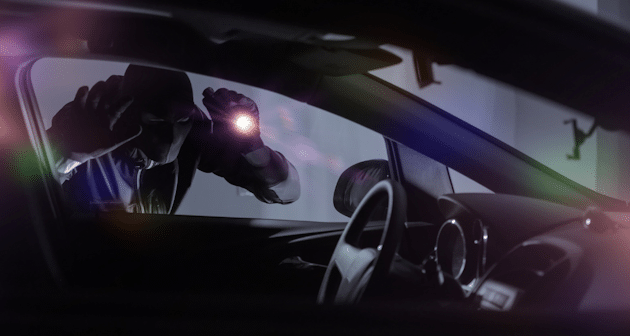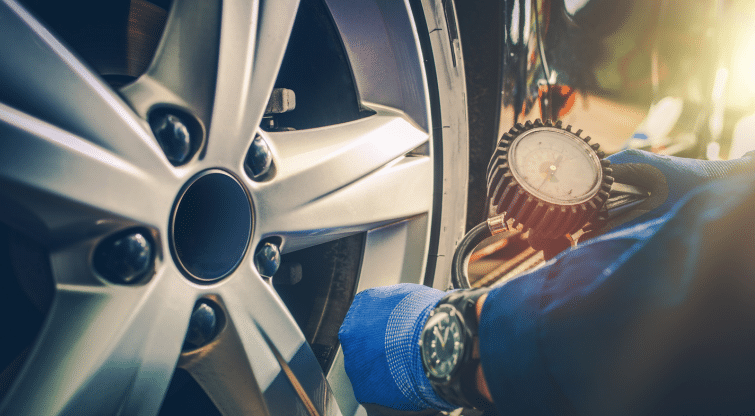
by California Casualty | Auto Insurance Info, Helpful Tips |
The moment you drive a new car off the lot, it begins to lose its value. This can come as quite a shock to new car owners. After all, you just spent your hard-earned money on a vehicle. Yet car depreciation is a reality. Understanding it will help anyone looking to buy, sell, or trade in a vehicle.
What exactly is car depreciation?
It’s the difference between the price you paid for your car and how much it is worth if you were to sell it.
How much do cars depreciate?
It depends a bit on the make and model of car. In general, cars lose 20% of their value in the first year, and 60% over the first five years, according to Kelley Blue Book. You can check out their 5-Year Cost to Own for details on different makes and models. You can also find a car calculator online to get an idea of depreciation for your specific vehicle.
What causes depreciation?
Most things that we buy lose value over time due to wear and tear. That’s the same with cars and trucks. Depreciation is caused by the age of the vehicle and the mileage for starters. In addition, as new models come out with redesigns and new technology, there is less demand for older vehicles. Finally, the condition of the car matters. If your car has been in an accident, or has lots of dents or rusting paint, that impacts the resell value.
Can you slow down depreciation?
While depreciation is inevitable, the good news is that you can take steps to help your car keep its value a little longer.
- Maintain your car. Since wear and tear can increase depreciation, taking care of your car helps it stay working its best. Follow the owner’s guide for recommended maintenance.
- Take care of your car’s appearance. Dents and scratches can reduce your vehicle’s value. Wash your car, repair scratches and dents, and keep it clean.
- Drive carefully. Accidents and damage – even when repaired – will impact a car’s value.
- Avoid custom modifications. While these can be fun, they may make it harder to sell your car down the line.
Here’s how to make depreciation work in your favor.
- Do you use your car for business? You can deduct your car’s depreciation on your taxes.
- Are you buying a car? You can purchase a one-year-old car that is as good as new, but you pay only about 80% of the price. Or you could choose a three-year-old vehicle where the bulk of the depreciation has occurred. Make sure to look for one with low mileage for the greatest value.
- Choose a make and model that will resell well. Some vehicles hold their value better than others. It depends on the brand’s reputation plus overall customer demand for certain models. Among the top resellers for 2024 are the Ford Bronco, the Toyota Tacoma, and the Mercedes Benz G-Class.
Other factors that will influence car depreciation include supply and demand. If there are supply chain disruptions that reduce inventory, used versions of those models could be valued at a higher rate. In addition, rising gas prices can put more fuel-efficient cars in demand. Keeping tabs on the market can help you to make informed decisions.
Insurance can also help with depreciation.
Since car loans can last five years, your new car could lose 50% of its value before you pay it off. The loan doesn’t go away even if your car is totaled or stolen. In the event of a total loss, insurance pays the current market value of your vehicle. That’s where a new car replacement policy or gap insurance could help.
New car replacement insurance gives you the money for a new vehicle of the same make and model, minus your deductible. This is typically an add-on coverage that is paired with either collision or comprehensive coverage.
Gap insurance stands for Guaranteed Asset Protection. It is also called loan/lease coverage. Gap is an optional coverage that is paired with either collision or comprehensive coverage. In a covered claim, collision or comprehensive help pay for the totaled or stolen vehicle up to its actual cash value. Gap covers the rest of the loan or lease.
Your car is one of your greatest investments. Keep it protected for added peace of mind.
This article is furnished by California Casualty, providing auto and home insurance to educators, law enforcement officers, firefighters, and nurses. Get a quote at 1.866.704.8614 or www.calcas.com.

by California Casualty | Auto Insurance Info, Helpful Tips |
Imagine this: you’ve just bought a brand-new car and barely had time to savor that new car smell before disaster strikes. Whether it’s a major accident or theft, your car is now a total loss. Here’s the kicker: your insurance settlement isn’t enough to cover what you still owe on your car loan or lease.
That’s where gap insurance comes in. It covers the difference (“the gap”) between what your insurance pays and what you still owe, sparing you from being stuck with a hefty bill for a car you no longer have.
What is gap insurance?
Gap insurance stands for Guaranteed Asset Protection. It is also called loan/lease coverage. Gap is an optional coverage that is paired with either collision or comprehensive coverage. In a covered claim, collision or comprehensive help pay for the totaled or stolen vehicle up to its actual cash value. Gap covers the rest of the loan or lease.
Why is gap coverage necessary?
When you buy or lease a new car, it starts to depreciate as soon as you drive it off the lot. Most new vehicles lose up to 20 percent of their value in the first year, according to Kelley Blue Book. That means that the actual cash value of your new vehicle could be lower than your loan or lease amount.
In the event of a total loss, insurance pays the current market value of your vehicle. The loan doesn’t go away even if your car is totaled or stolen. If there is an additional amount still owed to repay the loan, your Gap insurance covers it. Otherwise, you will have to pay that amount out-of-pocket.
What doesn’t gap insurance cover?
Gap insurance does not pay if your car is only damaged and not declared a total loss. It does not cover mechanical failures and will not pay if your engine dies. Gap does not cover your deductible for collision or comprehensive. It does not pay overdue payments or late fees on your car loan. It only covers the gap, or difference, between your car’s actual value and the amount of your loan.
When should you consider gap insurance?
New car owners generally find value from gap insurance if their car is less than 3 years old. Consider gap insurance if:
- You made a down payment that was less than 20 percent of your car’s value.
- You financed the vehicle for 60 months or longer.
- You leased the vehicle. (Gap insurance is generally required if leasing a car.)
- You moved negative equity from an old car loan into a new one.
- Your vehicle depreciates faster than average.
Calculate whether gap insurance offers a good value for you.
Here’s an easy way to determine if the amount of gap insurance works with your situation.
- Use the Kelley Blue Book to estimate your car’s current value.
- Calculate the difference between the value of your car and your loan amount. Are you able to cover this cost out-of-pocket?
- Get a cost quote for gap coverage.
- Determine how long you will need gap coverage. At some point, the value of your car and the amount of your loan will be close. Mark on your calendar when to drop gap coverage from your policy.
Where should you get gap coverage?
Your car dealer will offer to sell you gap insurance, but if you buy it there, it will be rolled into your car loan. That means you’ll be paying interest on it. You’ll also lose the flexibility to cancel it when you no longer need it. In addition, car dealers often charge a higher fee for gap coverage. Check with your auto insurer. You should be able to add gap coverage to an existing auto policy.
Gap insurance is one of those coverages that we hope we never need, but it’s so helpful if we do. Enjoy your new car, and safe travels.
This article is furnished by California Casualty, providing auto and home insurance to educators, law enforcement officers, firefighters, and nurses. Get a quote at 1.866.704.8614 or www.calcas.com.

by California Casualty | Auto Insurance Info, Helpful Tips, Safety |
You gave your teen the keys to the car, and now they’re off. How do you know they’ll be safe on the road? The latest technologies can help. We’ve done a deep dive into some of the most popular driving monitoring apps that can help your teen establish safe driving habits. Here’s what you need to know.
What can apps measure?
- Speed limits: With limited driving experience, your teen may not realize the dangers of driving fast. They may not know how much time it takes to slow down a car. There are apps that set a speed limit and notify you if the driver exceeds that limit.
- Distractions: Distracted driving is an issue for us all but new drivers are especially vulnerable. They may not realize how much can happen if they take their eyes off the road for even a few seconds. Even responding to a phone call or changing playlists can lead to an accident. Some apps set a Do Not Disturb mode when the car reaches a certain speed. If your teen disables the setting, you will be notified.
- Locations: GPS tracking can let you know your teen is where they are supposed to be. Some systems also have a silent alarm so that your teen can signal an SOS if they feel unsafe.
Before you install a driver monitoring app, it’s important to have a conversation with your teen. Make sure you include any other family rules such as the curfew for the car being home, and how you wish your teen to check in with you. Discuss distracted driving and how they should handle calls and texts. In doing so, you are setting up your teen for a lifetime of safe driving.
The Apps
Auto Coach (free)
This app is designed to help parents teach teens how to drive safely. It was developed by the Shepherd Center Hospital in conjunction with the Georgia Governor’s Office of Highway Safety. It includes interactive lessons for teens with cognitive and physical disabilities. The app tracks driving hours and keeps parents involved in the process.
Bouncie (monthly subscription plus one-time device charge)
This offers real-time detailed insights and driving reports on speed, location, idle time, and hard braking. Bouncie also can monitor gas mileage and fuel economy, battery level, oil level and vital alerts. Information is accessible on your smartphone or computer. Bouncie requires a device that plugs into your vehicle. It works for most vehicles made after 1996.
FamiSafe (monthly subscription)
This app goes well beyond safe driving. It also tracks screen time and inappropriate content on kids’ devices. From a driving perspective, the app reports on speed limit, total distance traveled, and real-time physical location. It instantly notifies you if your teen speeds or brakes suddenly. Weekly driving reports help to analyze patterns. You manage all devices from a FamiSafe Dashboard on your smartphone or computer.
Family360 (monthly fee)
This app synchronizes your family into a private “circle.” It tracks everyone’s locations in real time through mobile phones. You can be notified when someone in your circle leaves or enters the places you go to most frequently.
Life360 (free and paid options)
This app offers real-time location monitoring and detailed driving reports. It tracks speeding, hard braking, and in the paid version signals crash detection and sends roadside assistance. It does more than tracking driving, however. The app includes digital monitoring, stolen phone protection, medical assistance, travel support, and disaster response.
On My Way (free)
This app pays you for safe driving. Users get 5 cents for every mile they drive without texting. While they cannot withdraw real cash, your teen can use it toward food, gas, events, travel, and gift cards.
Road Ready (free)
Part of the Parent’s Supervised Driving Program, this app logs the state’s required drive time for learners and tracks driving experiences. It also provides tips for safe driving.
Teen Time: Parental Control (free and paid options)
This is a location app that also monitors screen time and how kids are using their phones. It allows parents to limit use of games and apps. You can use it to track use of devices while your teen is driving.
TrueMotion Family Safe Driving (free)
This app tells you where your family members are and how they got there, with details on exactly how they drove. It records phone use, texting, aggressive driving, speeding, and more.
Finally, make sure that your car is well maintained and fully insured with your teen listed on the policy. Talk to your insurance agent about ways that you can save with a teen driver.
This article is furnished by California Casualty, providing auto and home insurance to educators, law enforcement officers, firefighters, and nurses. Get a quote at 1.866.704.8614 or www.calcas.com.

by California Casualty | Auto Insurance Info, Helpful Tips, Safety |
The hunt for the perfect set of wheels is a rite of passage for teen drivers. While they may want style and speed, you know it’s better to choose safety and value. How do you find the perfect car that will win them over and fulfill your wish list? Here’s what you need to look for when determining the best cars for teens in 2024. (Scroll down for a list of recommended vehicles by price.)
There are certain safety features that are helpful for new, young drivers. When you look for cars for your teen driver, look for these:
- Blind spot monitoring to alert drivers of nearby vehicles
- Automatic emergency braking systems to avoid collisions
- Lane-keeping assist and lane departure warning systems to keep the car in its lane
- Pedestrian detection systems
- Speed warnings and audio muting while driving
Several automakers help parents monitor teen driving habits with technology that can set limitations, like maximum speed. Ford has MyKey and Chevy has General Motors’ Teen Driver Technology.
Some vehicles could be dangerous for teen drivers. Knowing what to avoid is also important.
- Sports cars have excessive horsepower which might encourage teens to drive recklessly. These cars also are more expensive to insure.
- Compact cars weighing less than 2,750 pounds may lack adequate crumple zones—important in a collision.
- Large vehicles have prolonged braking distances. They are also harder to maneuver and park.
- Vehicles that seat numerous passengers could raise the risk of distractions.
New Cars vs. Used Cars
New cars will automatically come with many safety features. However, they will also come with a higher price tag. Used cars are a better value. If you can’t get every safety feature, at minimum, you will want the following: anti-lock brakes, traction control, and stability control. Also, most cars from model year 2017 and later have rearview cameras.
Recommended Vehicles
The following vehicles offer top safety ratings from the IIHS and NHTSA. IIHS is the Insurance Institute for Highway Safety. NHTSA is the National Highway Traffic Safety Administration. The ones we’ve selected also consider reliability and fuel economy and are recommended by the Kelley Blue Book. Prices listed are based on the Kelly Blue Book Fair Purchase Price national average and could vary due to purchase location, mileage, condition, and trim package.
Cars under $30,000
| 2023 Toyota Prius |
$27,450 |
| 2024 Honda Civic |
$23,950 |
| 2024 Toyota Corolla |
$21,900 |
| 2024 Kia Seltos |
$24,390 |
| 2024 Subaru Crosstrek |
$24,995 |
| 2023 Hyundai Kona |
$22,140 |
| 2024 Chevrolet Trailblazer |
$23,100 |
| 2024 Nissan Sentra |
$20,630 |
Cars under $20,000
| 2017 Toyota RAV4 |
$16,665 |
| 2018 Mazda CX-5 |
$15,176 |
| 2017 Honda CR-V |
$18,272 |
| 2020 Toyota Corolla |
$15,872 |
| 2019 Mazda3 |
$13,983 |
| 2017 Honda Accord |
$16,021 |
| 2017 Toyota Prius |
$17,157 |
| 2018 Kia Sportage |
$12,989 |
| 2018 Honda Civic |
$16,049 |
| 2019 Chevrolet Equinox |
$13,594 |
Cars under $15,000
| 2018 Kia Soul |
$10,807 |
| 2017 Toyota Corolla |
$11,959 |
| 2018 Mazda3 |
$12,299 |
| 2015 Honda CR-V |
$14,141 |
| 2016 Mazda CX-5 |
$11,969 |
| 2015 Toyota Prius |
$12,442 |
Cars under $10,000
| 2013 Honda Accord |
$9,626 |
| 2013 Toyota Camry |
$9,344 |
| 2014 Mazda3 |
$7,773 |
| 2013 Toyota Corolla |
$8,441 |
| 2015 Honda Civic |
$9,463 |
| 2009 Toyota RAV4 |
$7,926 |
| 2010 Honda Element |
$9,760 |
| 2011 Toyota Avalon |
$9,873 |
Final Thoughts
There are ways to save when adding a teen driver to your auto policy. Check with your insurer to find out more.
Safe travels to you and your new driver.
This article is furnished by California Casualty, providing auto and home insurance to educators, law enforcement officers, firefighters, and nurses. Get a quote at 1.866.704.8614 or www.calcas.com.

by California Casualty | Auto Insurance Info, Helpful Tips |
Your car was stolen. That sinking feeling hits hard. You feel violated and angry. Then, reality sets in. How are you going to get to work? Who’s going to pick up the kids? What do you need to do to get back on the road?
The good news is you’re not alone. There’s a network of support for auto theft victims. Here’s a state-by-state rundown.
Arizona
Victim Services Compensation Program
Arizona Criminal Justice Commission
https://www.azcjc.gov/Programs/Victim-Services/Compensation-Program
This program provides monetary assistance to victims of crime who suffered a direct financial loss because of that crime. The thief does not need to be caught for the victim to qualify for assistance. However, all other sources of financial support must be exhausted before victims can be considered for this program.
California
California Victim Compensation Board
https://victims.ca.gov
The Board can help pay bills and expenses that result from violent crimes. Therefore, you must have a physical injury or be a victim of a hit-and-run to qualify.
Crime Survivors Resource Center
https://crimesurvivors.org/
This nonprofit offers helpful resources for victims of crime by county.
Colorado
Victims Assistance Grant Application
Colorado Auto Theft Prevention Authority
https://lockdownyourcar.org/resources/victims-assistance/
You can receive support such as reimbursement for storage and tow fees, vehicle cleaning, limited repairs, and alternative transportation methods. The authority may also cover catalytic converter theft. You will need to provide your driver’s license, vehicle registration, insurance declarations page, and a copy of the police report. A victim’s advocate also is available to help crime victims and their families.
Idaho
Crime Victims Compensation Program
https://crimevictimcomp.idaho.gov/
This compensation program is related to victims who have suffered personal injury because of the crime. Reimbursable expenses include medical bills, wage loss, death benefits, funeral expenses, and counseling.
Kansas
Property Crimes Compensation Fund
https://www.douglascountyks.org/district-attorney/property-crimes-compensation-fund
This fund covers financial losses from a property crime not covered by insurance for incidents in Douglas County, KS. The thief does not need to be caught for the victim to qualify for assistance.
Oregon
Oregon Department of Justice Crime Victim and Survivor Services
https://www.doj.state.or.us/crime-victims/crime-victim-compensation/compensation-for-victims-of-crime/
This program was created to help victims of violent crime with expenses associated with the crime. While the program cannot replace stolen items, it can help with mental health counseling and medical expenses.
Wyoming
Wyoming Division of Victim Services
https://dvs.wyo.gov/compensation
This program helps victims of violent crime deal with the mental, physical, and financial aftermath.
National
National Center for Victims of Crime
https://victimsofcrime.org/
This nonprofit organization works with local, state, and federal partners to help victims rebuild their lives. It offers attorney referrals, confidential helplines, and information.
National Organization for Victim Assistance (NOVA)
https://trynova.org/
NOVA can put victims of crime in touch with local and state resources that can help.
Victim Connect
https://victimconnect.org/
Crime victims can learn their rights and options through this referral hotline service. Hotline services are offered in over 200 languages, and victim assistance specialists provide emotional support, information, and referrals.
Does insurance protect you if your vehicle is stolen?
If you have comprehensive auto insurance, you will be covered in case your car is stolen. Insurance will cover the cost of a replacement car, minus any deductibles or rental car costs that you may need to pay. Drivers who are paying loans on their vehicles are required to have comprehensive insurance. However, once you have paid off your car, this insurance is optional. Check with your insurer to see what is covered in the event of theft.
You can often save on your insurance premiums if you install anti-theft devices. Ask your provider for more information.
It typically takes 30 days before a vehicle is considered gone forever. Work with your insurance provider to get your claim paid, so you can get back on the road.
This article is furnished by California Casualty, providing auto and home insurance to educators, law enforcement officers, firefighters, and nurses. Get a quote at 1.866.704.8614 or www.calcas.com.

by California Casualty | Auto Insurance Info, Helpful Tips, Safety, Travel |
When it comes to keeping your tires inflated, you have a choice. You can fill up with air, like people have done for decades, or you can use nitrogen. What are the pros and cons of each? Let’s take a closer look.
Nitrogen
Remember when you studied molecules in science class? Molecules are the smallest amount of a substance that still carries its properties. Nitrogen molecules are larger and slower than the molecules in air. As a gas, nitrogen also is drier. These properties give nitrogen some advantages.
PROS
-
- Nitrogen won’t seep out of your tires as quickly as air because of its larger, slower molecules. That will help you to maintain your tire pressure longer.
- The moisture naturally found in air can cause changes in temperature. With nitrogen, there is no moisture and therefore it is less susceptible to temperature changes that affect tire pressure.
- Nitrogen is especially good for locations with very high or low temperatures. It is often used in race cars, heavy vehicles, and aircraft because it is nonflammable and able to more easily maintain its temperature.
- Nitrogen will not react to rubber, steel, or any of the tire’s components. There is no oxidation which can damage tires. That should help preserve your tire over time.
CONS
-
- You most likely will pay to inflate your tires with nitrogen. The initial charge to remove the air and fill them with nitrogen can cost about $30 per tire. Then, it will be about $7-10 per tire for topping it off as you need more nitrogen.
- Nitrogen may not be significantly better than air at maintaining tire pressure. Consumer Reports found only a 1.3 psi difference between air and nitrogen over the timeframe of a year.
- There is no scientific evidence that nitrogen helps with fuel economy.
- It is harder to find places to fill up with nitrogen. You will have to search for locations that offer nitrogen, even for a fee.
Note: If your tire is low and there is no place to get nitrogen, you can top your tire off with air. It won’t harm your tires, but it will reduce the effectiveness of the nitrogen alone.
Air
You may be surprised to learn that air is composed of mostly nitrogen. In fact, the mix is 78% nitrogen, 21% oxygen, and about 1% of other gases. Air, which has been used to inflate tires for over a century, also has its advantages.
PROS
-
- Air is often free. If it costs, it is minimal such as a dollar or two.
- Air is readily available. You can find it at gas stations, convenience stores, wholesale clubs, tire shops, and more.
- While air loses pressure over time, its rate is close to that of nitrogen. Plus, with air, drivers are more likely to check in often versus relying on nitrogen to stay pressurized.
CONS
-
- You will experience more pressure changes with air. Air is affected by temperature changes due to water vapor in its mix. However, it is worth noting that most tire shops have moisture separators that limit the amount of water vapor.
- The oxygen in air can cause oxidation, which can make rubber brittle over time.
- You will have to fill your tires more often when you have air versus nitrogen.
Tire Pressure is Key
When you fill up with nitrogen, you get a green cap on your tire valve. When you fill up with air, your cap will be black. However, whether you use nitrogen or air, you still will fill your tires to the same recommended pressure. Check the inside of your door or your driver’s manual to find the right psi.
Maintaining the correct pressure helps your tires last longer, your car handle better, and could even help with fuel economy. Under or over inflated tires increase your risk of a blowout and increase wear and tear. No matter whether you use nitrogen or air, regularly checking the pressure of your tires is part of responsible vehicle maintenance.
Your car is one of your greatest investments. Protect it with the right insurance for added peace of mind.
Safe travels from all of us at California Casualty.
This article is furnished by California Casualty, providing auto and home insurance to educators, law enforcement officers, firefighters, and nurses. Get a quote at 1.866.704.8614 or www.calcas.com.






